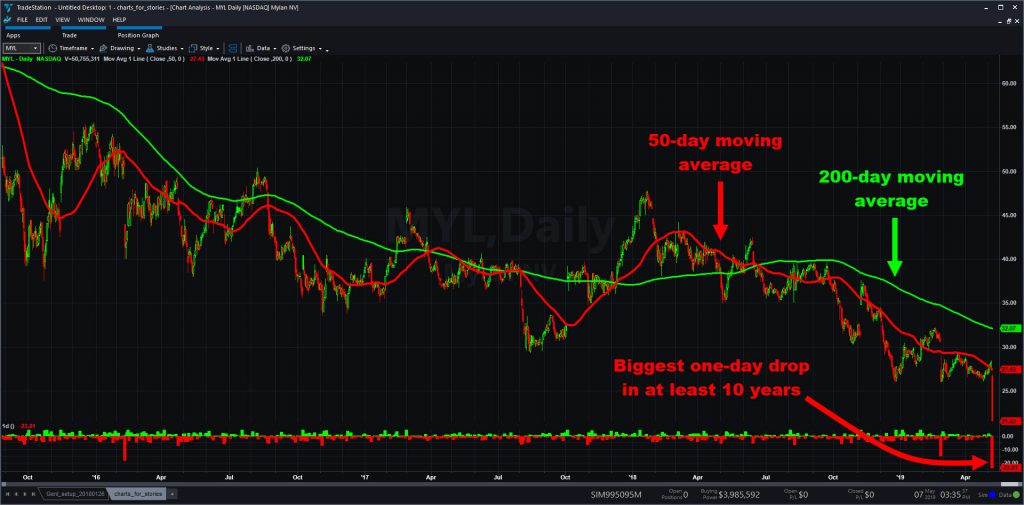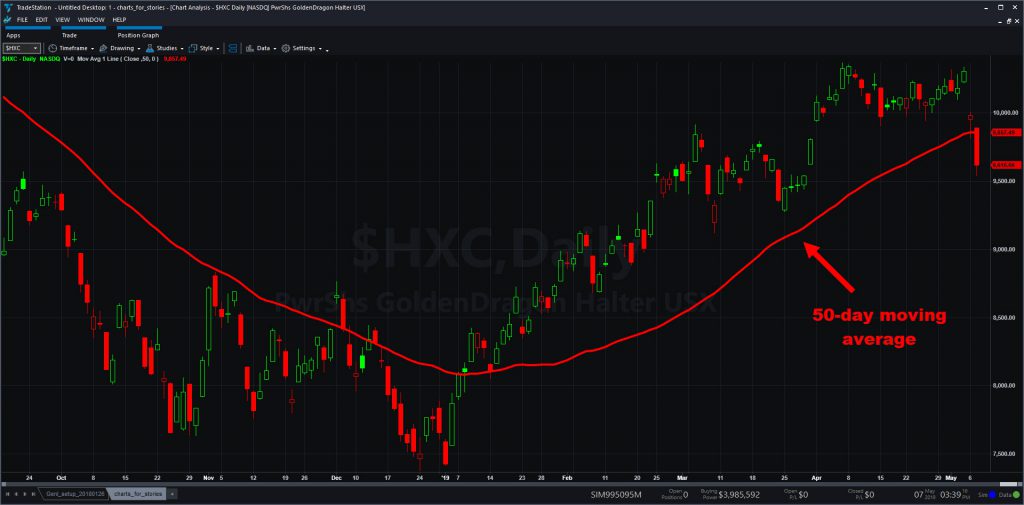Sentiment has swung sharply bearish this week. President Trump’s tariffs on China are a big part of the story, but health care’s another major culprit.
The biggest decliner in the S&P 500 today, for instance, was Mylan (MYL). Disappointing results, manufacturing problems and weak demand hammered the drug maker 24 percent. That was its worst decline in at least a decade
Biotechnology Regeneron Pharmaceuticals (REGN) fell more than 6 percent after missing estimates. Botox-maker Allergan (AGN) also dropped more than 4 percent despite reporting strong results, and the iShares Nasdaq Biotech ETF (IBB) declined 3 percent.
The price action is consistent with an increasingly bearish pattern in the sector as several negative forces emerge. One is political risk as Trump and the opposition Democrats both seek to limit the cost of care.

That raises the issue of pricing, a key driver for corporate profit margins. As previously reported on Market Insights, the industry seems to be facing a spiral of downward prices — a dramatic change from earlier decades.
Census Bureau Inflation Data
Consider a factoid from the Census Bureau’s consumer-price inflation (CPI) report. Year-over-year changes for its “Medical Care” category have risen slower than the broader “All Items” category in 17 of the last 20 months.
The only other times that happened was the 1970s, when oil prices drove up inflation. Most of 40 years since then saw medical inflation outpace general inflation by at least 2 percentage points. That is, until the trend halted in mid-2017.
The strong economy is another potential issue for health care because the industry is non-cyclical. It doesn’t benefit very much if gross domestic product (GDP) and employment keep accelerating. How long will investors stick with boring health-care stocks when sectors like financials offer better exposure to a strong economy at much lower multiples?
The Impact of Tariffs
The bigger, and better-known, drag on the markets Tuesday was obviously Trump’s decision to raise tariffs on China. That’s bad news for several parts of the market:
- Chinese technology stocks are dropping again after a strong start to 2019. Just today the PowerShares Golden Dragon index ($HCX) closed below its 50-day moving average for the first time early January.
- Energy and commodities: Tariffs hurt China’s economy, which reduces demand for oil and metals like copper.
- Semiconductors: China accounts for almost half of chip demand in the world. Despite some optimistic CEO comments, this industry still hasn’t recovered from a big slowdown last year.
- Industrials: Some large industrials like Caterpillar (CAT) and Boeing (BA) have significant exposure to China.

There are other stories hitting the global scene. Did you know, for instance, that economists in Brussels cut their 2019 and 2020 growth estimates for Europe? Did you also know that the Turkish lira is getting hammered on new political worries? Both of those stories are negative for international assets. Maybe that’s why the Russell 2000 keeps outperforming.
In conclusion, stocks rallied for months as investors took a glass-half-full approach to the market. But now sentiment is shifting as negativity builds toward the key health-care sector and global stocks.






















